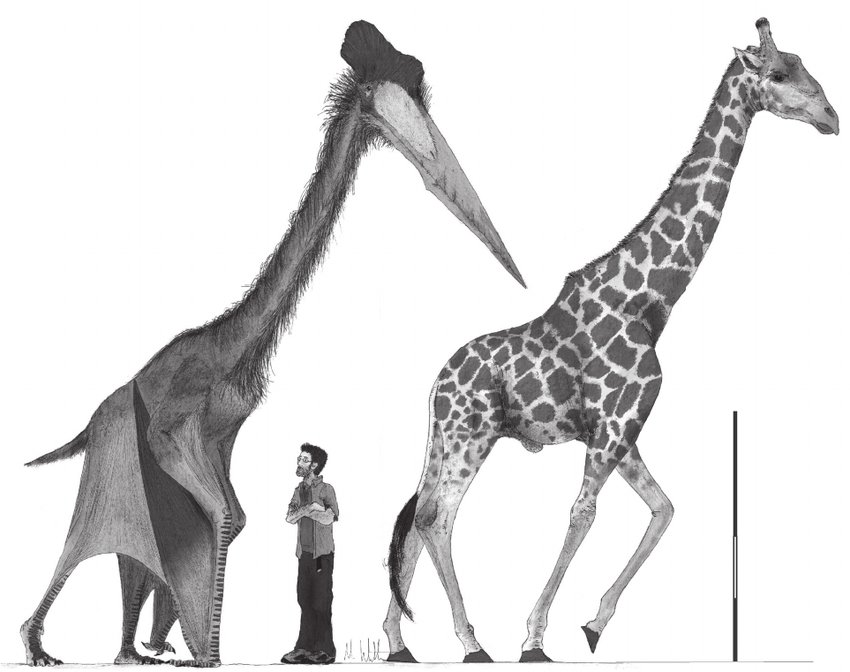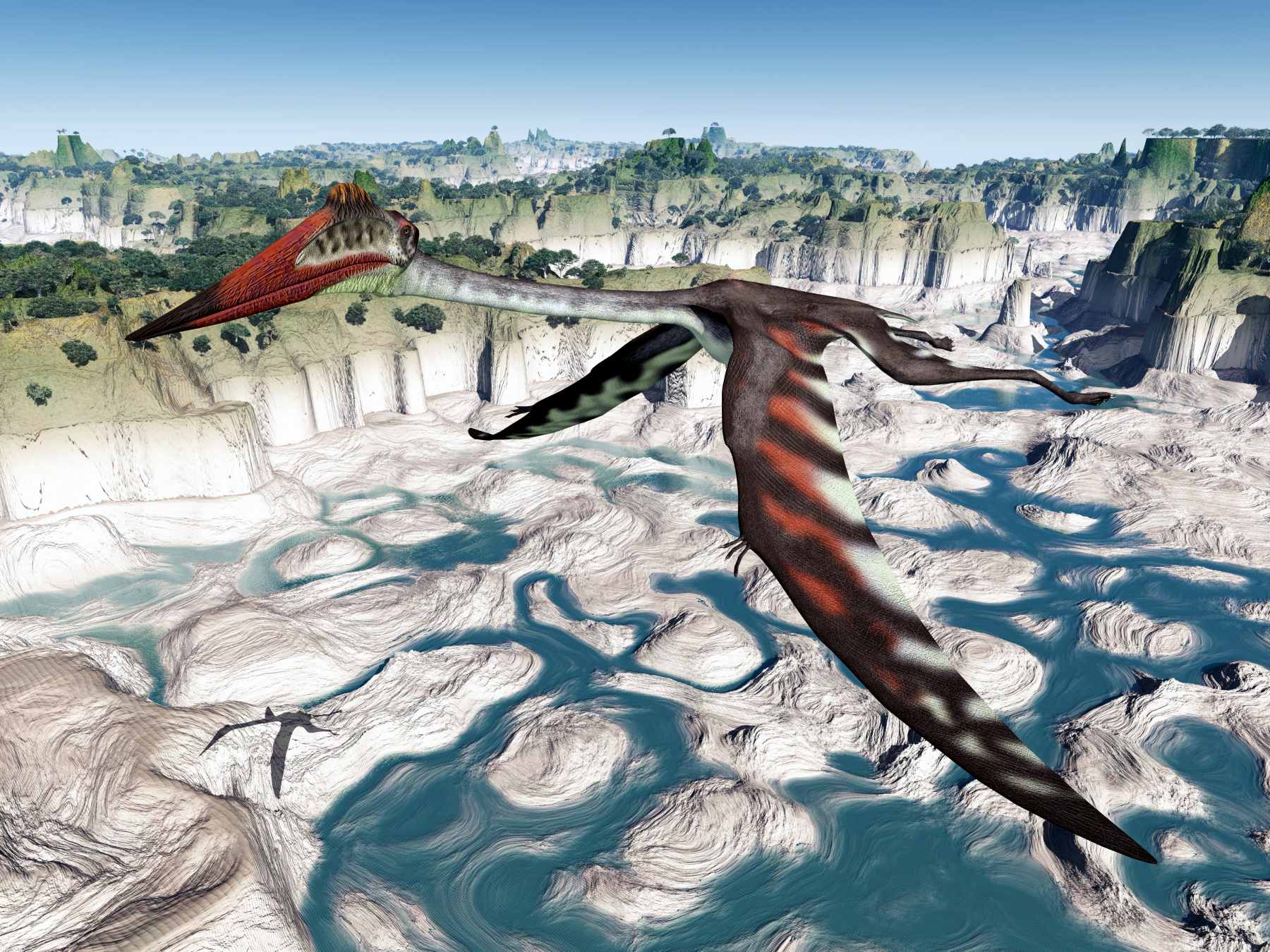Quetzalcoatlus northropi, the largest flying animal to ever exist, roamed the skies during the Late Cretaceous period, approximately 100 to 66 million years ago. Belonging to the family of pterosaurs, not dinosaurs, this magnificent creature possessed a wingspan ranging from 37 to 40 feet, making it an awe-inspiring sight in the ancient skies.

Named after the Mesoamerican god Quetzalcoatl, the Quetzalcoatlus was not a dinosaur, but rather a flying reptile. It belonged to a group of pterosaurs known as azhdarchids, which were characterized by their large size. Quetzalcoatlus northropi was among several azhdarchids that shared a similar size, with some notable examples being Arambourgiania philadelphiae, Hatzegopteryx thambema, and Cryodrakon boreas.
Researchers have conducted extensive studies on Quetzalcoatlus, with six papers published, providing the most comprehensive understanding of this creature to date. These papers delve into various aspects of its life, including its habitat, anatomy, movement, and feeding habits.

The anatomy of Quetzalcoatlus is truly remarkable. It had an unusually long and stiffened neck, characteristic of the Azhdarchidae family of advanced toothless pterosaurs. Its unique wing structure consisted of an elongated fourth finger that supported a membrane, differentiating it from birds where the second finger plays a similar role. The wing spanned an impressive 12 meters or 40 feet, allowing Quetzalcoatlus to soar through the skies with tremendous grace and power.
To better understand its behavior, scientists have meticulously reconstructed Quetzalcoatlus’ anatomy based on well-preserved fossils. These fossils have provided valuable insight into its physical capabilities and lifestyle. For example, it is believed that Quetzalcoatlus had the ability to fly up to 80 miles per hour for 7 to 10 days, reaching altitudes of 15,000 feet. This incredible range allowed it to cover distances between 8,000 and 12,000 miles, making it a true master of the skies.

When it comes to locomotion, Quetzalcoatlus displayed a unique gait due to its long wings touching the ground when folded. It was bipedal and relied on its strong rear legs to initiate takeoff. By jumping and flapping its wings, it could quickly ascend into the air and begin its majestic flight.
Feeding habits of Quetzalcoatlus resembled those of herons and egrets. Similar to these modern birds, it sifted through mud in search of food and hunted small prey from both the air and land. Its feeding strategy allowed it to sustain its massive size and energy requirements.
Despite the wealth of information gathered from the papers, some questions regarding Quetzalcoatlus still remain. For instance, the exact shape of the wing membranes and their attachment to the body are still subject to further investigation and research.
It is believed that Quetzalcoatlus was covered with pycnofibres, hair-like fibers that were different from animal hair.
Unfortunately, the Quetzalcoatlus, along with numerous other species, fell victim to the devastating K-T mass extinction event, which occurred around 65 million years ago. This event resulted in the extinction of three-quarters of Earth’s plant and animal species, including this majestic flying reptile.
The first Quetzalcoatlus fossils were discovered in 1971 in Texas, United States. Since then, researchers have continued to uncover more fossils, piecing together a more complete understanding of this impressive creature.

It is important to note that despite living alongside dinosaurs, Quetzalcoatlus did not evolve into birds. Birds are the only surviving lineage of the dinosaur family, while pterosaurs, including Quetzalcoatlus, were a separate group of flying reptiles.
In conclusion, Quetzalcoatlus northropi remains an iconic creature from the Late Cretaceous period. Its enormous size and impressive adaptations allowed it to dominate the skies like no other animal before or since. Ongoing research and scientific exploration continue to unveil new insights into the life and behaviors of this magnificent pterosaur, helping us appreciate the wonders of the ancient world and the incredible diversity of life that once thrived on our planet.
After reading about Quetzalcoatlus: Earth’s largest flying creature with a 40-foot wingspan, read about Real life dragon: Australia’s largest flying reptile discovered.




